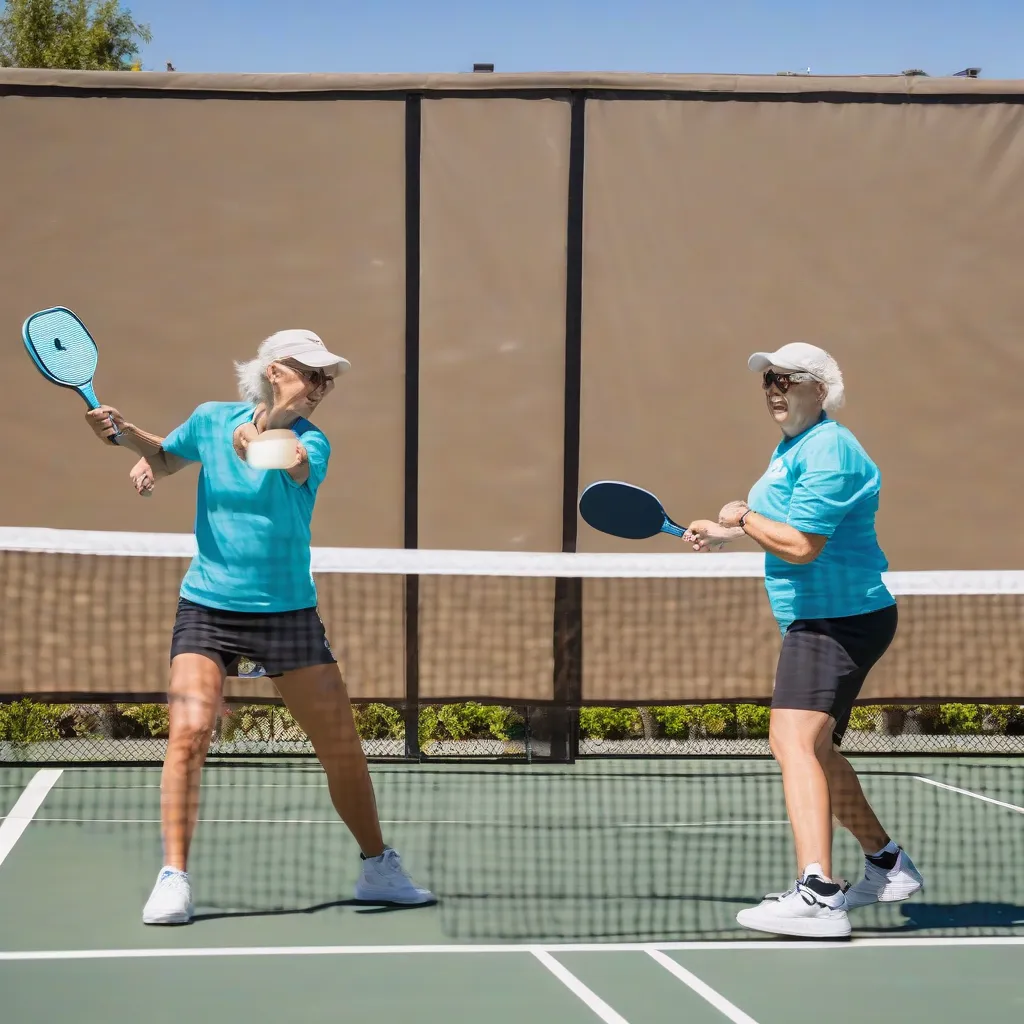Imagine this: you’re at the net, the ball hangs tantalizingly in the air, and you have the perfect opportunity to slam it home for a winner. This is the thrill of net play in pickleball doubles, and mastering it can significantly elevate your game. But dominating the non-volley zone isn’t just about power; it’s about strategy, positioning, and teamwork. This article dives into the winning pickleball doubles strategies for conquering the net and leaving your opponents scrambling.
Understanding the Non-Volley Zone (NVZ)
Before we delve into strategies, let’s recap the importance of the non-volley zone, often called “the kitchen.” This seven-foot area on either side of the net is crucial for controlling the game. You can’t volley the ball while standing within the NVZ, but volleying is allowed if you’re outside the kitchen and the ball bounces in the NVZ before you hit it. Understanding this rule is fundamental to successful net play.
Positioning: The Foundation of Net Domination
The ideal position at the net is about a foot back from the NVZ line, feet shoulder-width apart, and paddle up, ready for action. This allows you to react quickly to volleys, dinks, and blocks. Maintain a balanced stance, allowing you to move laterally with ease. “Think of it like a dance,” says pro pickleball player Sarah Ansboury. “You’re constantly adjusting your position to maintain the optimal attacking angle.”
The Dynamic Duo: Teamwork at the Net
In doubles, communication and coordinated movement are key. Both players should strive to maintain the ideal net position, forming a formidable wall. When one player moves to intercept a shot, the other should adjust accordingly, covering any gaps. This coordinated movement is essential for preventing easy passing shots by your opponents.
Aggressive Volleying: The Art of the Put-Away
Once you’re at the net, aggressive volleying is your best weapon. Aim for sharp angles and put the ball away decisively. Don’t just hit it hard; hit it smart. Look for open spaces on the court and exploit them.
The Soft Game: Mastering the Dink
While power volleys are exciting, the dink is a crucial element of net play. A well-placed dink can force an error or set up a winning volley. Keep your dinks low and soft, aiming for the area just over the net. “The dink is not about power; it’s about precision,” says pickleball coach Mark Renneson. “A well-executed dink can be just as deadly as a powerful smash.”
Blocking: Your Defensive Shield
Blocking is your first line of defense against hard-driven shots. Hold your paddle up in front of you, angled slightly downwards. Focus on absorbing the impact of the ball and redirecting it back into your opponents’ court. A solid block can neutralize a powerful attack and create an opportunity for a counter-attack.
The Third Shot Drop: Setting Up the Attack
The third shot drop is a crucial transition shot that sets the stage for your net attack. After the serve and return, the serving team executes a soft, controlled drop shot into the opponent’s kitchen. This forces the opponents to hit a less aggressive shot, allowing you and your partner to move to the net and establish your dominant position.
Poaching: The Element of Surprise
Poaching is an advanced tactic where one player intercepts a shot intended for their partner. It can be highly effective in disrupting your opponents’ rhythm and creating winning opportunities. Communication is crucial when poaching to avoid collisions and confusion.
Dealing with Lobs: The High-Flying Challenge
Lobs are an effective way for opponents to counter your net presence. When facing a lob, communicate with your partner and decide who will cover the overhead. Maintain your balance and focus on making a controlled overhead shot to return the ball deep into your opponents’ court.
Strategic Consistency: The Key to Winning
Winning at the net requires more than just powerful shots and quick reflexes; it demands strategic consistency. Maintain a positive mindset, stay focused on your positioning, and communicate effectively with your partner. By implementing these strategies, you can transform your net game and become a dominant force on the pickleball court.
 Winning at the Net in Pickleball Doubles
Winning at the Net in Pickleball Doubles
Conclusion
Dominating the net in pickleball doubles is a combination of strategic positioning, aggressive volleying, deft dinks, solid blocking, and smart poaching. Remember, effective communication with your partner is essential for success. Practice these strategies regularly, and you’ll find yourself winning more points, more games, and ultimately, more matches. Don’t forget to check out these resources for improving your court mobility and developing strategic consistency: strategies to improve court mobility and the importance of strategic consistency. Now, get out there, take control of the kitchen, and enjoy the thrill of winning at the net! Share your own net-dominating strategies in the comments below and let’s learn together!
- Bond, Payton (Author)
- English (Publication Language)
- Baker, Joe (Author)
- English (Publication Language)
- Anderson, Brian (Author)
- English (Publication Language)
- Carnot, Prem (Author)
- English (Publication Language)
- Palcic, Lisa (Author)
- English (Publication Language)
- Callahan, John (Author)
- English (Publication Language)
- Hall, Dennis (Author)
- English (Publication Language)
- Baker, Mr. Joe (Author)
- English (Publication Language)
- Foster, Blake (Author)
- English (Publication Language)
- Satka, David (Author)
- English (Publication Language)









